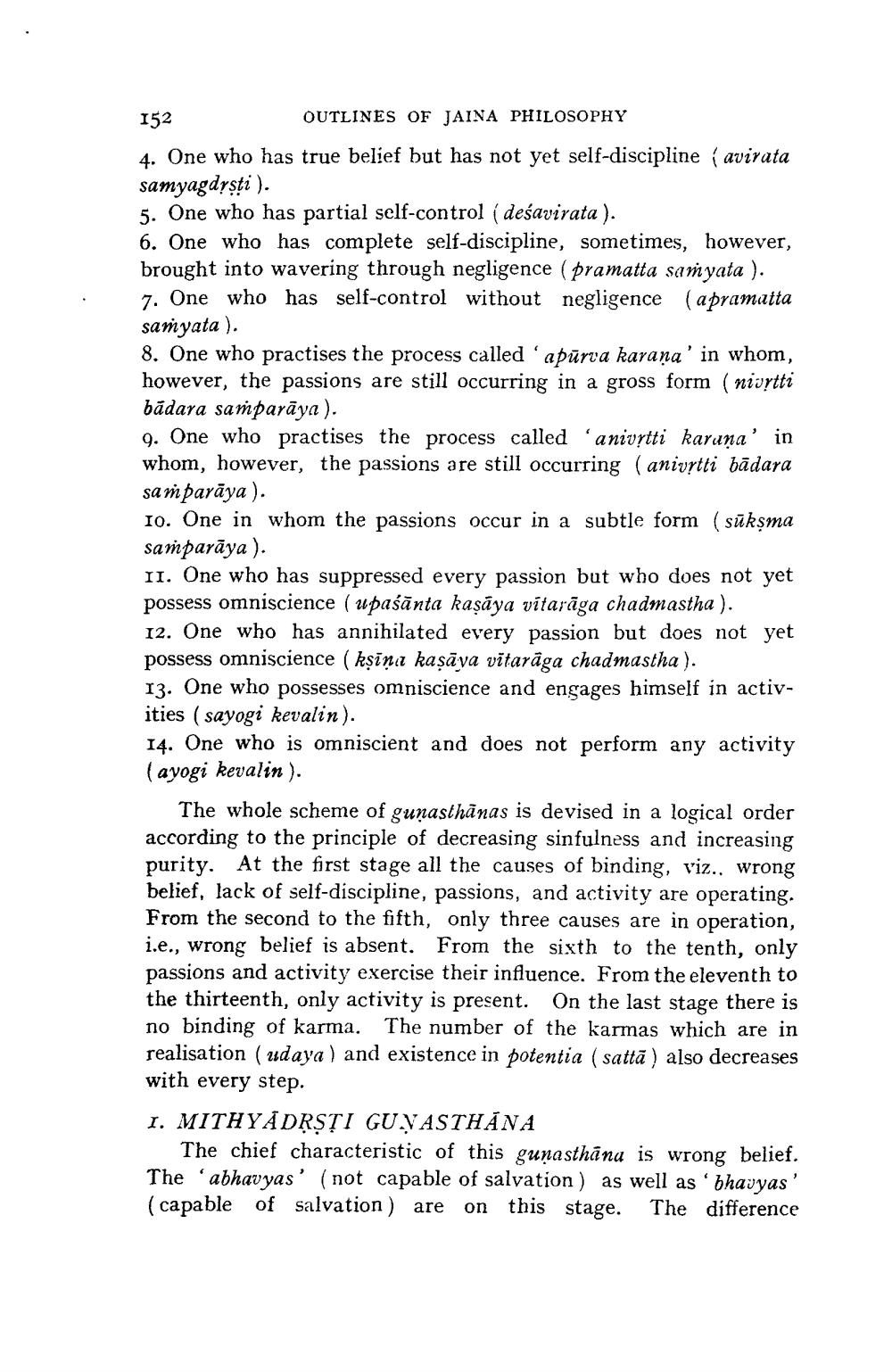________________
152
OUTLINES OF JAINA PHILOSOPHY
4. One who has true belief but has not yet self-discipline (avirata samyagdṛṣṭi).
5. One who has partial self-control (deśavirata).
6. One who has complete self-discipline, sometimes, however, brought into wavering through negligence (pramatta samyata). 7. One who has self-control without negligence (apramatta samyata).
8. One who practises the process called 'apūrva karana' in whom, however, the passions are still occurring in a gross form (nivrtti bādara samparāya).
9. One who practises the process called 'anivrtti karana' in whom, however, the passions are still occurring (anivrtti badara samparāya).
10. One in whom the passions occur in a subtle form (sūkṣma samparāya).
II. One who has suppressed every passion but who does not yet possess omniscience (upaśānta kaṣāya vitarāga chadmastha).
12. One who has annihilated every passion but does not yet possess omniscience (kṣina kaṣāya vitaraga chadmastha).
13. One who possesses omniscience and engages himself in activities (sayogi kevalin).
14. One who is omniscient and does not perform any activity (ayogi kevalin).
The whole scheme of gunasthanas is devised in a logical order according to the principle of decreasing sinfulness and increasing purity. At the first stage all the causes of binding, viz.. wrong belief, lack of self-discipline, passions, and activity are operating. From the second to the fifth, only three causes are in operation, i.e., wrong belief is absent. From the sixth to the tenth, only passions and activity exercise their influence. From the eleventh to the thirteenth, only activity is present. On the last stage there is no binding of karma. The number of the karmas which are in realisation (udaya) and existence in potentia (satta) also decreases with every step.
1. MITHYADRṢTI GUNASTHĀNA
The chief characteristic of this gunasthana is wrong belief. The 'abhavyas' (not capable of salvation) as well as bhavyas' (capable of salvation) are on this stage. The difference




